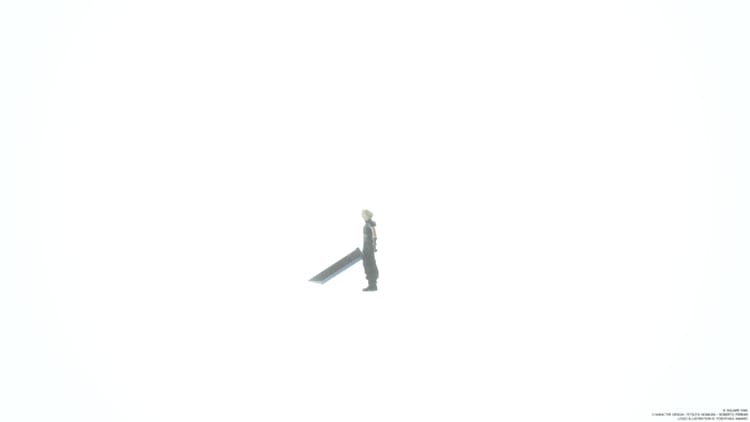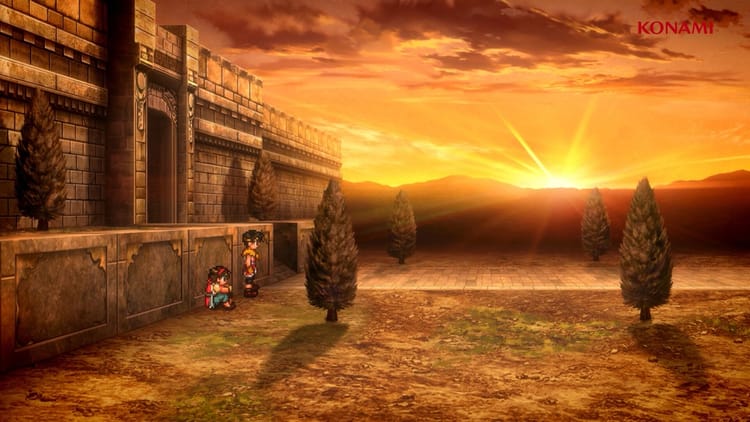VGHW Feature: What My Kids Taught Me About Retro Video Games
Welcome to Video Game History Week! In honour of the first anniversary of my book Fight, Magic, Items: The History of Final Fantasy, Dragon Quest, and the Rise of Japanese RPGs in the West, Astrolabe is celebrating video game history with a plethora of stories, features, lists, and interviews about video games, the people who make them, and the people who write about them.
Fight, Magic, Items is on sale! Use the code “LEVELUP” at checkout to get 20% off a physical copy through the Running Press website!

When I was sixteen years old, I walked into the living room of my new girlfriend’s house for the very first time and knew she was The One.
Because there, hooked up under a huge Sony TV, was a TurboGrafx-16.
What had passed for the console’s glory days were long past by the spring of 1998. That she not only had one, but still had it hooked up to her family’s main TV? She wasn’t just A Gamer, she was a gamer with taste. It’s no wonder we went on to raise three gaming hipsters of our own.
For me, gaming had almost always been a solitary activity. I was the only child of a single mother, a weird nerd with few friends, and an obsessive media consumer who couldn’t read enough science-fiction books, sports news articles or video-game magazines. Though I had plenty of opinions about the games I played, for years I had barely anyone to inflict them upon.
Back in my single-digit-age days, the neighborhood kids all traded cartridges of, or alternated lives and levels on, classic NES games. I didn’t get a SNES until I was big enough to mow lawns for money, and I relied on my rich-kid best friend for opportunities to sink hours into Sega Genesis or TurboGrafx exclusives. In high school, I finally found a group of real-life friends who took video games as seriously as I did (and almost nothing else seriously enough).
But my girlfriend and I were serious about each other. We married at 22, and had three kids by 27. We threw ourselves completely into the parent life–and for most of the next decade, I simply didn’t have room in my life for the kind of story-driven single-player games, or intensely competitive multiplayer ones, that I preferred.
Consoles seemed to youthen as they got older, though, and we started to get opportunities to play games with our kids instead of despite them.
From Wii Sports to Guitar Hero, Mario Party to Madden, opportunities for our little ones to play with us big kids popped up everywhere. The Wii U even came with a little tablet for second-screen fun–and the HD remaster of The Legend of Zelda: Wind Waker inspired us to play a decade-old game we’d loved as a couple again as a family.
To build, you might say, a link to the past. [Ba-dum-tss -ed.]
It worked. I “drove” the controller and voice-acted all the text out loud–but the kids gave me plenty of input on where Link went and what he did. Talking with them today, the sequence where a weaponless Link has to stealth his way through a pirate ship imprinted heavily on them.
I gave nearly all the Legend of Zelda games the living-room-let’s-play treatment, and from there a few Final Fantasies. The elder two were getting old enough to play some of these for themselves–and by the time Breath of the Wild came out, they were playing on parallel saves even as I continued the family-play tradition.

Around this time our eldest found my wife’s old Nintendo DS, and a copy of Chrono Trigger. She tells me now she spent many sleepless nights under the covers, trying to figure out how to beat the food-storage Guardian–and my favorite game of all time became one of hers.
Our middle kid loved sports and racing games, eventually playing all the way through my beloved Wipeout series (including a couple of installments I’d missed as a busy parent). The youngest still has a soft spot for Final Fantasy VII’s chocobo racing–and the eldest hangs on to her pride in breeding a Golden Chocobo.
When COVID hit, everything changed. We were pretty tight-knit as a family–but what were two adults and three teenagers supposed to do for months on end with almost nothing to do?
Retro video games, of course.
We dragged more old hardware out of the basement, and hunted down switchboxes, adapters, and converters online. We installed emulators and subscribed to publishers’ virtual libraries. I bought a well-ventilated shoe cabinet and took a holesaw to the back of it, simultaneously connecting all kinds of retro games machines to our 42” plasma TV.
Including, after I asked my in-laws very nicely, their old TurboGrafx. My wife showed our kids the forgotten Zeldalike Neutopia, and the bizarre H.R. Geiger-y pinball game Alien Crush. I busted out vertical space shooter Blazing Lazers, and spilt-screen racer Final Lap Twin–with an incredible JRPG story mode that plays exactly like Pokémon Red/Blue (!), but with open-wheel race-car duels instead of pocketable monsters.
Incredibly, I found that I was better than ever at the games I loved. On June 28th, 2020, I beat Blazing Lazers.

I became World Champion in Final Lap Twin’s story mode. I beat not just Mega Man 2 again, but 1 and 3 and 4 for the very first times. I realized Final Fantasy VI was nowhere near as tough as it had been when I was 14.
I came to appreciate so many of my old favorites so much more differently now that I can play them as an adult–and without the scarcity imposed by cartridge inventories, I’ve gotten to have plenty of all-new experiences with games I only ever saw photo spreads of. Some long-held opinions of mine have since changed a little, but I’ve more often been pleased to have found myself on the right side of history.
When I got my old Dreamcast up and running, something about Soul Calibur clicked with all three of them. Incredibly, my 20-year-old VMU still held my game save, and they were soon challenging my old scores. We hunted down copies of Soul Calibur II, then III, then IV, and as soon as we safely could we headed out to my old stomping ground, Pinball Pete’s, for some OG arcade fighting-game action.
Our love for retro games has only grown from there: One kid has gotten deep into the Super Smash Bros. Melee world, ordering higher- and higher-end controllers to improve his mastery of a game that came out when he was negative five years old–and I never played. Another is in the middle of playing through all the Castlevania games, texting me progress shots and exchanging opinions. It felt amazing to get objective, time-removed validation of my long-held theory that Castlevania III was an attempt to answer the question, “What if we had taken Castlevania II in the complete opposite creative direction?”
When Final Fantasy VII Remake came out, we all watched the opening cutscene in awe. Our eldest dryly congratulated me for making her feel nostalgic for stuff from my childhood.
Of course, we all play new games, too, both separately and together. But in an age where most major-release titles are made to be endless part-time jobs for the kind of bored and lonely youngster I used to be, retro games (and indie games in the retro mold, such as current family fixation Baba Is You), are perfect for sharing couches, and lives.

I’ve been surprised to see what cultural touchstones have survived from my parents’ generation; Zoomers tend to know who Elvis is, but not Marilyn Monore; “Grease,” but not “M.A.S.H.” The many, many issues around corporate IP and digital preservation are fraught enough for GenXers, Xennials, and Millenials trying to keep the games of their own youth playable for themselves–but we all will doubtlessly be surprised to see which old-school games the generation(s) after us choose to treasure.
I don’t expect our kids to grow up and fight over the TurboGrafx-16 so they can show their kids Air Zonk. But I do expect them to take the time to share Undertale with the next generation. To let out a whoop of triumph when they finally beat Hollow Knight, decades later. To value art and story, character and setting, innovative gameplay and the joy of in-person multiplayer. To pass along not necessarily all the retro games we love, but a love for the qualities that made us love them.
About Ty Schalter

Ty Schalter is a professional writer and talker best known for sports analysis at sites like FiveThirtyEight and Bleacher Report. But his writing about video games and culture has appeared at Waypoint, HuffPost, The Comeback--and of course, his own "Gimme Schalter" newsletter. He's also a kidlit author with three published non-fiction kids' books, and a YA novel eternally in revisions.
Support
There are lots of ways to support Astrolabe and my other work. Check ‘em out!
Keep In Touch
Enjoy Astrolabe? Want more SFF and retro gaming goodies? You can find me on Twitter and my website.
Credits
Astrolabe banner photo by Shot by Cerqueira on Unsplash





Member discussion